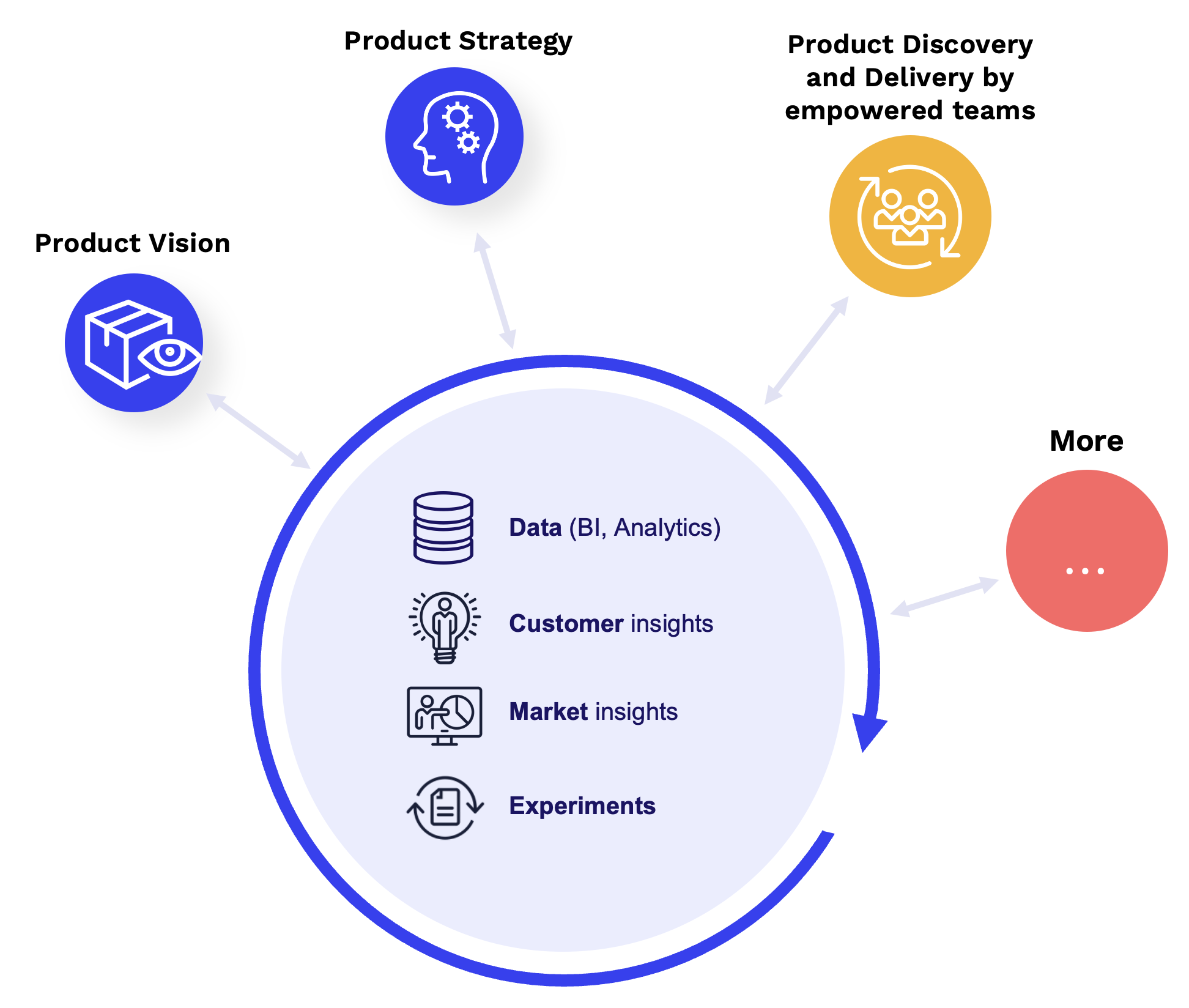Product Vision and Strategy
A clear and compelling product vision is essential for guiding product development and aligning the entire company.
It serves as the North Star, providing direction while enabling teams to make autonomous decisions that support a shared goal. A well-crafted vision not only empowers product teams but also ensures alignment across business functions, particularly between Sales and Tech. Without it, teams risk becoming siloed, losing sight of the bigger picture. A strong product vision answers two critical questions: What is our ultimate goal? and How does my team contribute to it? By setting a unified direction, it fosters clarity, autonomy, and long-term success.
In the following I outline how to approach the development of a Product Vision, as I've done in the past many times, but also important aspects to consider.
Key elements
A product vision needs to be built on essential foundation:
- It's customer-centric
- It's bold and ambitious on a 3-5y horizon
- Is based on insights (market, internal metrics,customer knowledge)
- Gives clear answers to major strategic questions
- Leverages industry trends
Customer-centric
A strong product vision helps keep the company focused on what truly matters: the customer's needs. While company goals often center on growth and cost reduction, real success only comes when we solve real problems for our customers.
Many failed products could have benefited the company—if only they had been valuable to customers. That's why we must always tell the story of our product vision from the customer's perspective. How does it make their life easier or better?
When developing a product vision, collaboration with an experienced product designer is essential. If there's no in-house expertise, this is one of the few times hiring an external design firm makes sense—to create what's known as a vision prototype ("visiontype").
Once the vision is clear, the product team's job is to make it a reality. This requires a well-planned product strategy and years of continuous iteration—discovering, refining, and delivering solutions that align with customer needs.
The Role of Insights in Product Vision
A strong product strategy and vision is not built on assumptions or gut feelings—it must be driven by insights. As Jeff Bezos famously stated, "No customer ever asked Amazon to create the Prime Membership program." Instead, Amazon identified patterns, behaviors, and opportunities that led to one of its most successful innovations. True innovation often comes from understanding customers deeply, rather than simply responding to direct requests.

To create a truly impactful and data-driven product strategy, companies must establish a continuous and collaborative approach to collecting, generating, and sharing insights across teams. This ensures that product decisions are rooted in real data, customer behavior, and market trends, rather than opinions or isolated feedback.
"No customer ever asked Amazon to create the Prime Membership program.", Jeff Bezos
Product Vision needs to be built on Industry trends
New trends emerge constantly, many driven by technology advancements. But not all trends last—some are just temporary fads. As product leaders, we must distinguish real trends from short-lived hype and focus on those that genuinely improve customer solutions.
Most successful product visions leverage one or more major industry trends. Some key examples today include:
• Mobile technology
• Cloud computing
• Big data & machine learning
• Augmented reality (AR)
• Internet of Things (IoT)
• Edge computing
• Consumerization of enterprise tools
Especially today I cannot imagine a product vision of any company, not including utilization of AI.
However, trends aren't just about technology. Changes in customer behavior, buying patterns, and market dynamics are equally important.
The key takeaway? Customers don't care about technology itself—they care about how well it solves their problems. While we may place bets on new technologies, we must always ensure they serve a real customer need rather than being innovation for its own sake.
Make it immersive
Many stop at bringing the product vision down to paper ideally in very compact form, like Product Vision template. But in my experience one of the most important aspects is to bring a product vision alive and mak it as immersive as possible. At Visable for example driven by the head of Product Design we sketched / designed a completer future product, Product Search, Login area, how users interact. Then we brought it to live in form of an inspiring 4-minute video. The impact
More to consider
A common mistake in defining a product vision is making it too small or uninspiring. A vision that merely lists features is not compelling enough—it must describe a meaningful future where customer lives are genuinely improved.
The vision is not a roadmap—it's not about how we'll get there, but where we want to go and why it matters. The roadmap consists of projects and features that may help us reach that vision over time.
Most product visions span 3 to 10 years into the future. The more complex the product, the longer the timeline.